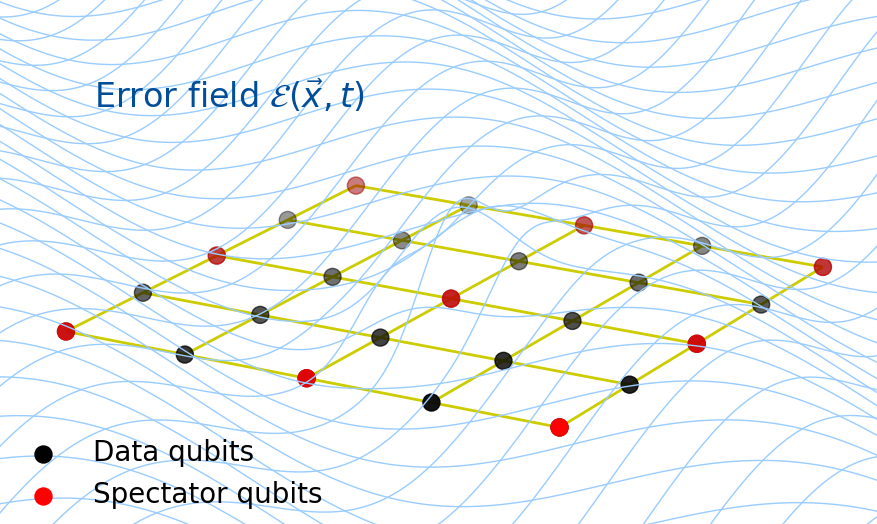July 16, 2019

Quantum computers promise to be a technological revolution, but they will only be possible if the error rate of quantum bits (qubits) is kept under a manageable level. Many techniques have been developed to control, mitigate, and correct quantum errors, and the most appropriate choice depends strongly on the specific kind of noise in the system. If we are performing a long computation and the nature of the errors change in time, it would be inconvenient to have to halt the whole process and recalibrate the system.
In this work, we propose to set aside a few of a quantum computer's qubits, which we call spectator qubits, to be used as probes for changes in the error profile during the computation. This method requires balancing the number of measurements performed in the spectator qubits -- which need to be sufficiently large to acquire a reasonable amount of information about the error profile -- and the time we take to perform these measurements -- if we take too long to acquire information, the miscalibration will become too large and ruin the computation.
We discuss how both conditions can be satisfied simultaneously, and illustrate with two example applications. In the first, we show how spectator qubits can be employed to detect a classical external field that rotates the qubits away from their desired state, and use this information to develop tailored pulse sequences that maximally suppress these errors in the data qubit. In the second application, we show how spectator qubits placed around a data qubit in an ion trap can be used to detect and correct miscalibrations in the laser beam used to drive the quantum gates. For more details, see our preprint at arXiv:1907.03864.